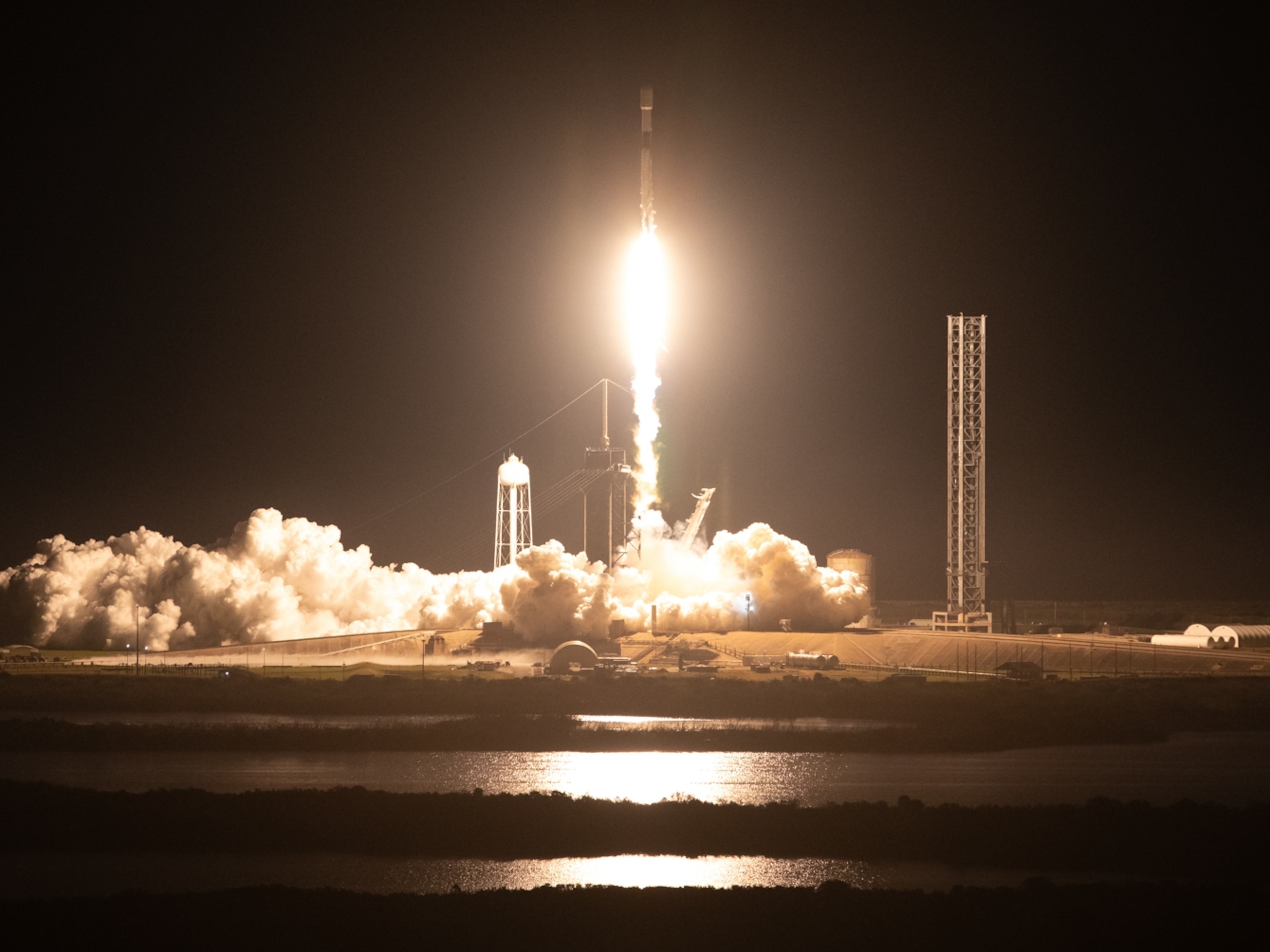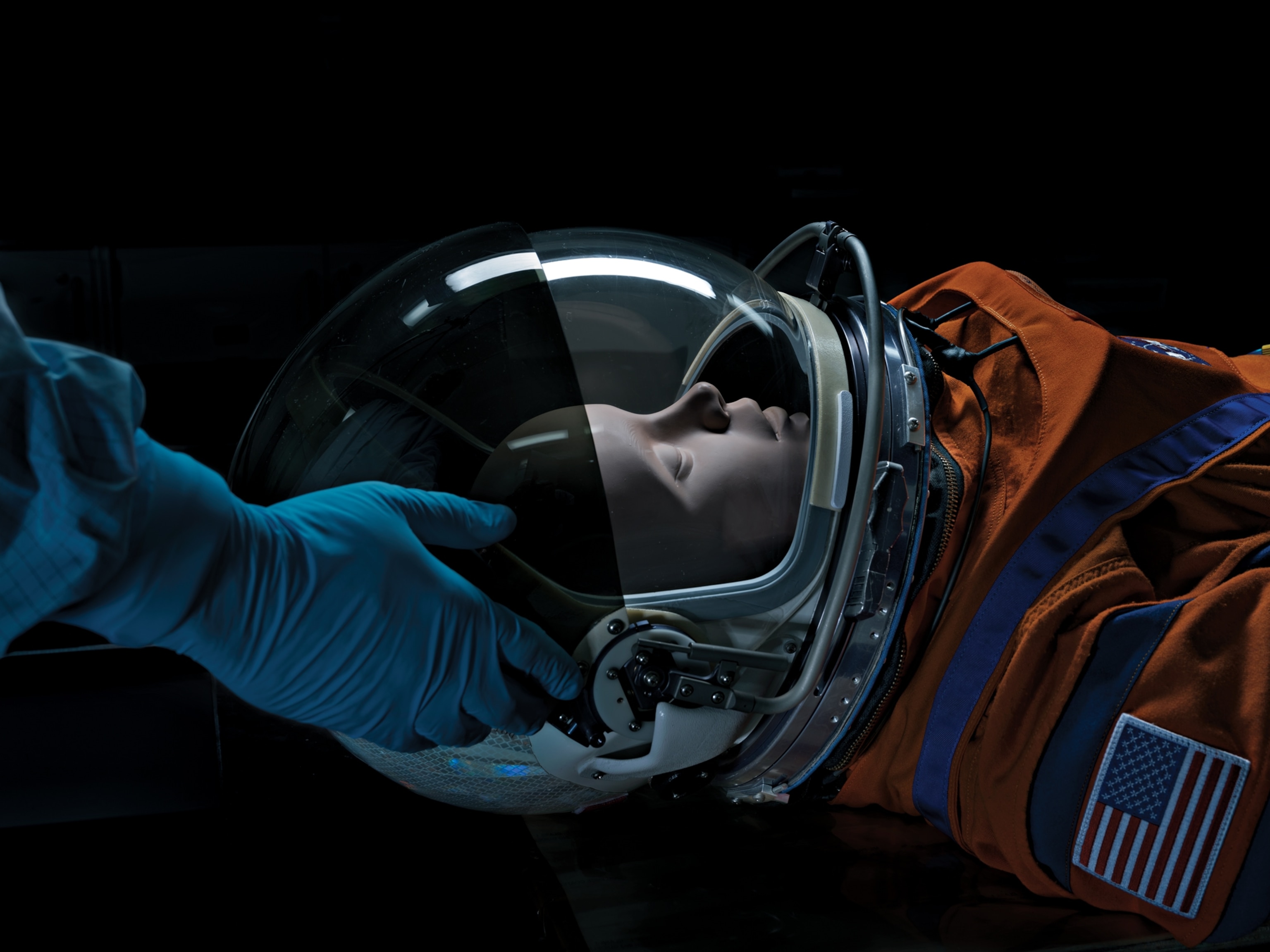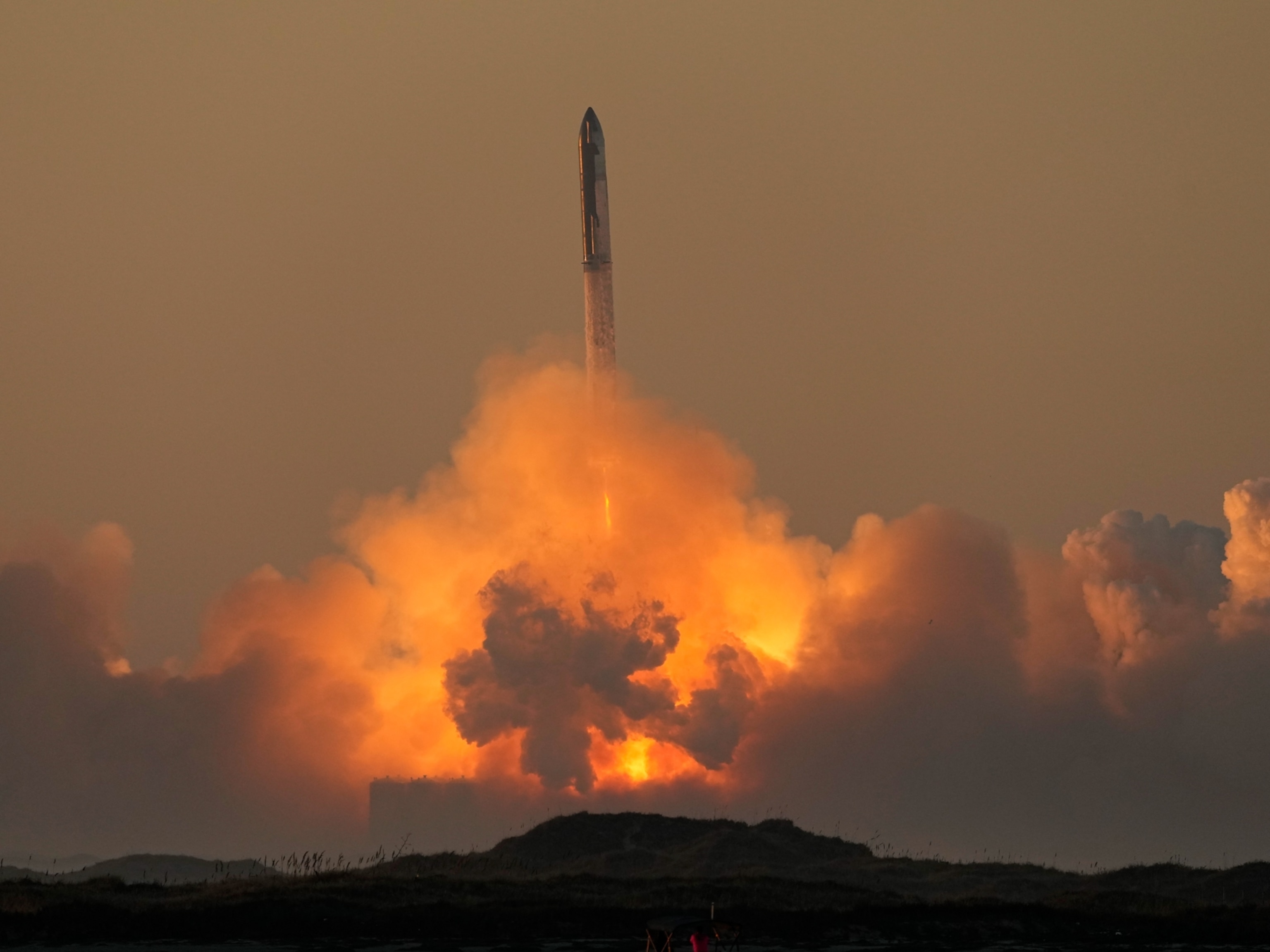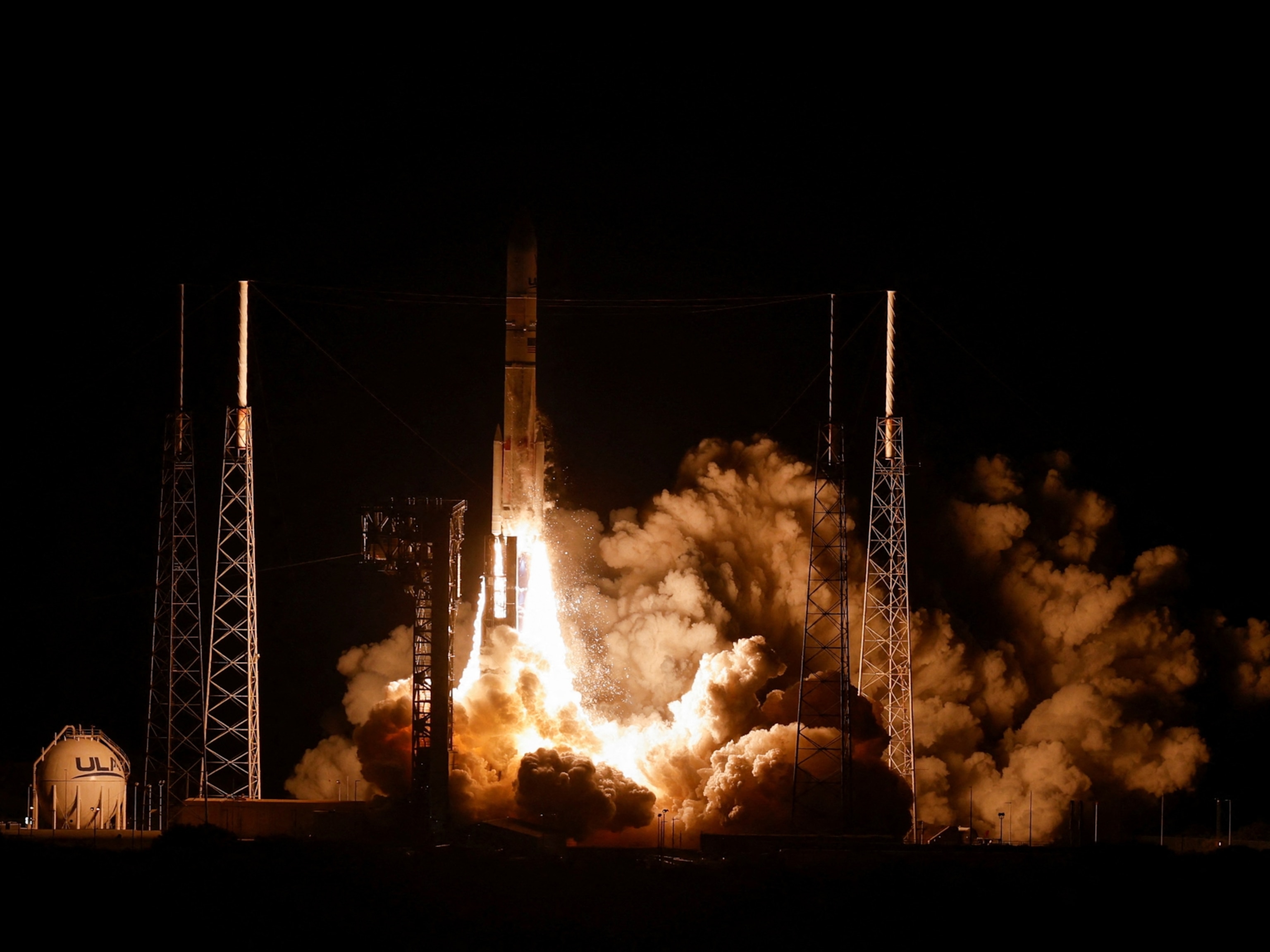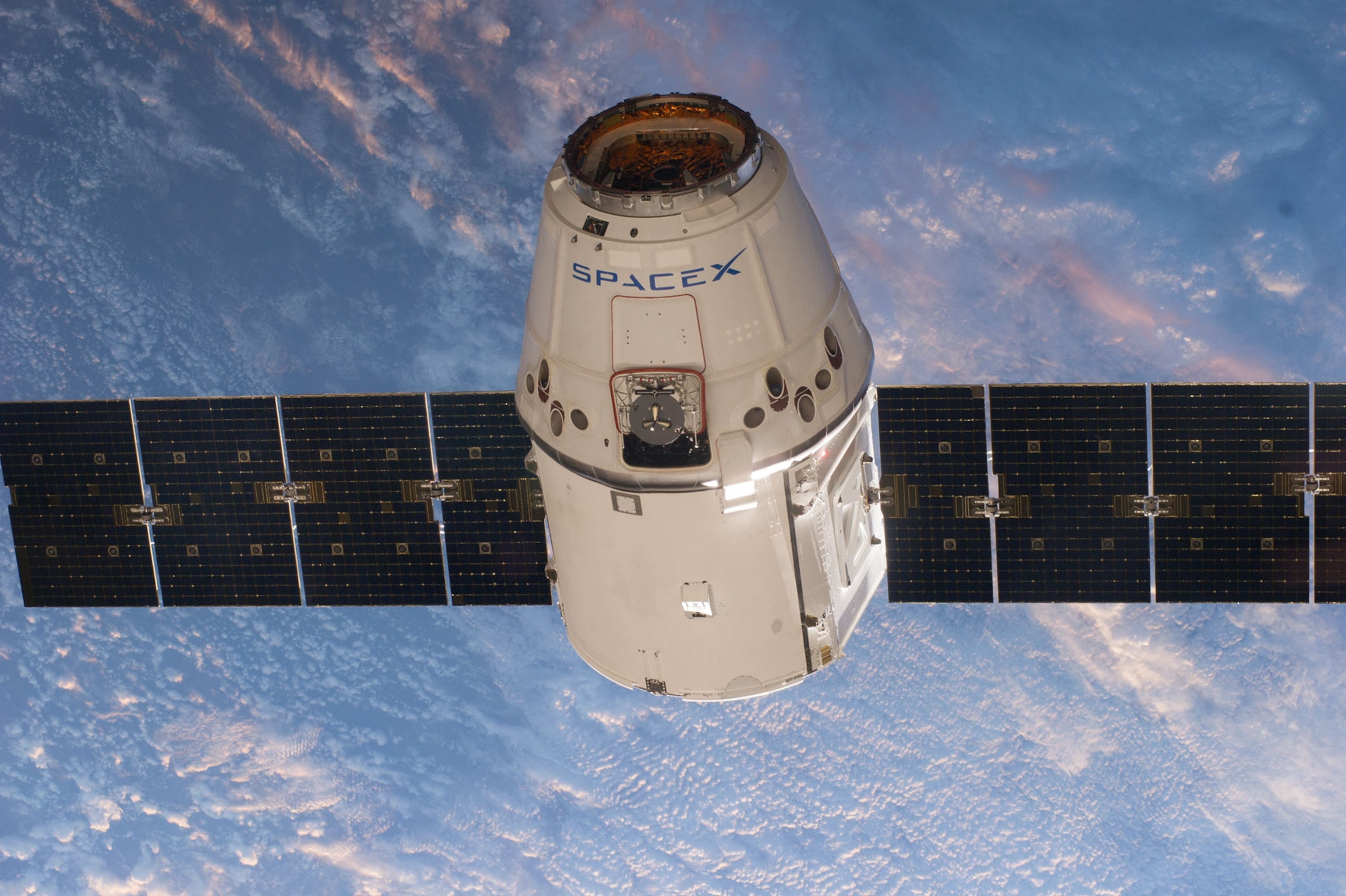
SpaceX Plans to Send People to the Moon in 2018—Get the Facts
The proposed mission would see two private citizens make a loop around the moon, but the company has a few technical hurdles to clear first.
In a surprising and somewhat secretive press briefing, Elon Musk announced today that his company SpaceX intends to fly two paying passengers to the moon by late 2018. The pair reportedly approached SpaceX with the idea and have paid the company a “significant deposit.”
As envisioned, the mission would lift off from Pad 39A at NASA’s Kennedy Space Center in Cape Canaveral, Florida—the same launch pad from which the Apollo missions blasted off more than four decades ago, delivering astronauts into lunar orbit and onto the moon’s surface. The SpaceX passengers wouldn’t walk on the moon, though; the trip would slingshot them around the moon before returning to Earth.
“This presents an opportunity for humans to return to deep space for the first time in 45 years and they will travel faster and further into the Solar System than any before them,” SpaceX said in a statement.
With its anticipated launch date pegged to next year, the SpaceX plan is an audacious moonshot, contingent upon efficient technology development and reliable funding. But there’s no doubt that sending humans back to the moon would be exciting, whenever and however it happens.
Cool. So who’s going?
It’s still a mystery. The lunar tourists are two private citizens whom Musk declined to identify. But according to the Associated Press, they apparently know one another—which is good, because being stuffed in a space capsule with someone for a week would be difficult under the best of circumstances.
How will these private citizens get to the moon?
The plan for now is for the mystery pair to hitch a ride aboard a next-generation version of SpaceX’s Dragon capsule, which is already in service carrying un-piloted cargo missions to the International Space Station.
The crew-compatible Dragon 2 capsule, which will fly autonomously, is still in the design and testing phase. SpaceX intends to test the Dragon 2 later this year and send humans to the International Space Station aboard it in mid-2018.
If all goes to plan, the moon mission could launch in late 2018. After leaving Earth’s orbit, the Dragon 2 would loop around the moon and briefly venture into deeper space before returning home. The SpaceX itinerary suggests the trip will last about a week and cover as much as 400,000 miles, giving new meaning to the concept of frequent flier miles.
However, given the company’s somewhat loose relationship with deadlines, some critics wonder whether a human Dragon mission will occur when Musk says it will. There’s also the issue of getting the capsule into space. To lift something as weighty as a crewed Dragon 2 capsule, SpaceX will need its Falcon Heavy rocket, an as-yet unproven vehicle that for years has repeatedly missed its scheduled debut dates.
Has SpaceX flown anything to the moon before?
Nope. The company has been ferrying goods to and from the ISS since 2012, and Musk recently announced an ambitious strategy for sending people to Mars in the near future.
If SpaceX does indeed achieve its goal of ferrying people to the moon in late 2018, it will be the first time humans have visited the immediate lunar neighborhood since Apollo 17, which flew in 1972.
What sort of training will private passengers need to fly?
It’s unclear at this point, but one of the reasons Musk declined to identify the passengers is because they can’t fly until they’ve completed a series of health checkups and training regimens.
Astronauts preparing for missions aboard the International Space Station are in exceptionally good physical condition. They undergo a litany of physical examinations and train for the challenges of microgravity using a variety of simulators, including submerged replicas of the space station.
What does NASA make of this development?
In an official statement, NASA says it “commends its industry partners for reaching higher,” and that burgeoning public-private collaboration will “free the agency to focus on developing the next-generation rocket, spacecraft and systems to go beyond the moon and sustain deep space exploration.”
Musk has said that he prioritizes collaboration with NASA, and that if the agency wishes to send its own astronauts to the moon aboard a Dragon 2 capsule, they could displace the private passengers on the capsule’s maiden moon voyage.
What could possibly go wrong?
Lots. Space is hard.
Among other unpleasantries, rockets blow up, life support systems fail, sometimes you literally have to fit a square peg into a round hole, and it’s not exactly simple to safely plummet through Earth’s atmosphere. That’s just the technical stuff.
The interpersonal and psychological challenges associated with deep space missions are also an active area of research, and let’s just say that it’s not usually acceptable to vote a disagreeable team member off the island once your spaceship is en route.
But at least two people on Earth are so excited by the prospect of a lunar visit that they are willing to pay despite these challenges. While it’s still a mystery how much the moon tickets cost, Musk has said the fee is about the equivalent of a journey to the International Space Station, which in the past has seen space tourists pay between $20 million and $40 million.

